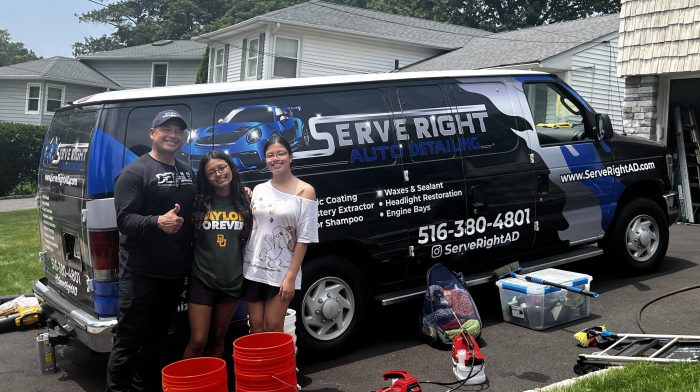
Many drivers in New York and New Jersey are still struggling to find gasoline nearly two weeks after Superstorm Sandy battered the region’s energy infrastructure. To help alleviate long lines at service stations, a gas rationing plan that lets motorists fill up every other day went into effect in New York on Friday. New Jersey instituted a similar plan last week. Local officials say the long waits have caused some panic-buying and hoarding among drivers.
Some questions and answers about the gasoline situation:
Q: Why is it still so difficult to get gas in New York and New Jersey?
A: Imagine the energy infrastructure as a giant hose pumping gas to drivers’ cars. There are still major kinks that are slowing down delivery. A key New Jersey refinery remains closed. Gas terminals in both states are shut or operating at reduced capacity. Lines at gas stations have been made longer by drivers topping off their tanks. And many stations remain without power.
Q: What are the biggest kinks right now?
A: The terminals where gas is pumped into tanker trucks. Seven of 57 terminals in the region remain closed, according to the government. Others are running at less than full capacity.
Many gas stations require a delivery a day and normally get their fuel from the affected terminals, says Tom Kloza, chief oil analyst at Oil Price Information Service. Now a tanker truck that usually fills up in Long Island might have to drive to a terminal in New York City or New Jersey to fill up and then drive back — battling traffic both ways. Or a fuel terminal might limit a distributor to a percentage of its normal volume. That means less gas for the stations, says James S. Calvin, president of the New York Association of Convenience Stores. A long line of customers quickly depletes that supply.
Another problem: An undetermined number of stations remain without power. That can be a “show stopper,” sending drivers to stations with power in other towns, Kloza says.
Kloza also notes that the densely populated New York City, Long Island and New Jersey region probably has fewer stations per capita than any other major metropolitan area. With commuter train, subway and bus service disrupted and gas stations and terminals suffering power outages, the low concentration of gas stations is “a big deal.”
Most experts have made the point that supply isn’t the problem — there’s plenty of gasoline in the region. The problem has been getting it where it needs to go.
Q: What is the status of the area’s gas stations?
A: AAA says that as of Friday about 65 to 70 percent of stations in New York City and Long Island were able to sell gas. That figure was 70 to 75 percent in New Jersey. Of those, many might have gas to sell in the morning and then run out in the afternoon. In its own survey, the Energy Department found that 28 percent of stations don’t have gas available for sale.
Q: How much of the situation is due to hoarding and panic-buying?
A: Drivers who normally feel comfortable driving around with less than half a tank are topping off out of fear of running out, and this is pushing up demand. “In many places we have seen a run on gasoline because people lack confidence that more gasoline will be available later in the week,” says AAA spokesman Michael Green.
Still, others are panicking because they can’t afford to run out of gas. Angel Ventura, 29, drives around Manhattan in a graffiti-covered delivery van for a Tribeca camera rental company. These days he looks for gas once the fuel gauge drops below a quarter for his 29-gallon tank. “It makes me crazy, thinking I might hit empty and not be able to find it,” he says.
Q: What’s being done to resolve the situation?
A: New York City and Long Island followed New Jersey’s lead and imposed odd-even gasoline rationing. On Friday, drivers with license-plate numbers ending in an odd number or a letter could fill up; on Saturday, even-numbered plates or those ending in zero will get their turn. Buses, taxis and limousines, commercial vehicles and emergency vehicles are exempt, as are people carrying portable gas cans. Out-of-state drivers are also subject to the system.
Q: How effective will the rationing be?
A: Lines were shorter almost as soon as rationing began last week in New Jersey and initial indications are the waiting time has been reduced in New York.
Another reason why New Jersey has recovered more quickly than New York is its proximity to petroleum supply areas near Philadelphia that were not damaged by the storm. It’s far more difficult to transport gasoline from Philadelphia to places like Queens or Long Island, Kloza says.
Q: What has been the impact on gasoline prices?
A: In the days immediately after Sandy, prices in the New York region gained just a few pennies. Experts believed the situation would improve once stations got power back. But once the supply issues became more apparent, prices jumped. The average price for a gallon of regular gas is up 15 cents in New York City in the past week, according to AAA. On Long Island, it’s risen 18 cents, to $4.14 per gallon. The average is up just 8 cents overall in New Jersey, but some areas have seen bigger spikes.
Outside the New York region, prices are falling, as they have been for more than a month. Prices are down 7 cents in North Carolina and Virginia in the past week. Even Connecticut prices have dropped about 3 cents. Since Sept. 14, the national average for a gallon of gas has dropped 41 cents. That’s because there’s plenty of gasoline in most parts of the U.S.
Kloza believes drivers in New York and New Jersey should start seeing lower prices in a week or so.
Q: Can the Internet and Social Media help drivers find gas?
A: Yes. Gasbuddy.com, which collects gasoline prices from thousands of drivers, has a Sandy Fuel Shortage Tracker that helps motorists find stations with fuel by ZIP code. Hess Corp. has a site that shows users how much gas individual Hess stations have. It’s updated every two hours. Some drivers have had success using the social media search engine Kurrently.com and typing in their city, town or neighborhood and “gas.” They can also search for “has gas” on Twitter.
While helpful, these sites are also indicative of the challenge facing drivers. Hess encourages customers to go to stations with 7,000 gallons of gas or more. As of 3 p.m., Hess stations in central and northern New Jersey were well supplied. But on Long Island, fewer than half of stations reported having more than 7,000 gallons of gas. About 16 had between 2,000 and 7,000 gallons. But the company warns that stations with less than 5,000 gallons could run out in less than two hours.
And drivers should use these sites with caution because the situation is very fluid. AAA recommends calling in advance to make sure a station has fuel.
Q: How much longer will this go on?
A: New York City Mayor Michael Bloomberg estimates the shortages could last another two weeks. AAA says the problem won’t be solved until the terminal and distribution system is restored. That’s tough to pin down. For instance, Motiva Enterprises LLC says a timeline for returning its terminals in Brooklyn and Long Island to operation has yet to be determined.
___
Shore reported from Denver. AP writers Tom Hays, Meghan Barr, Barbara Ortutay in New York and Geoff Mulvihill in New Jersey contributed to this report.
Copyright 2012 The Associated Press.
































